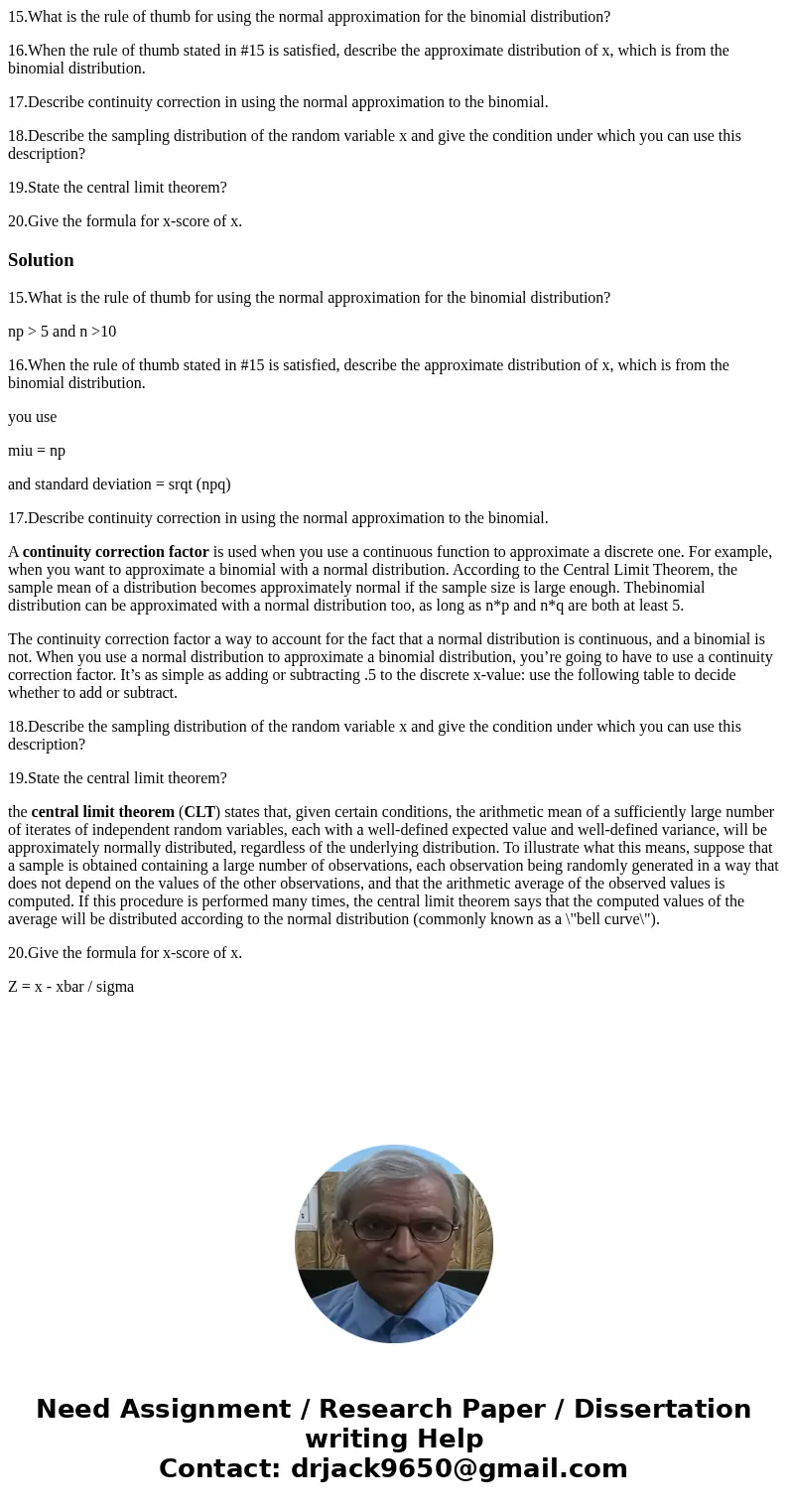15What is the rule of thumb for using the normal approximati
15.What is the rule of thumb for using the normal approximation for the binomial distribution?
16.When the rule of thumb stated in #15 is satisfied, describe the approximate distribution of x, which is from the binomial distribution.
17.Describe continuity correction in using the normal approximation to the binomial.
18.Describe the sampling distribution of the random variable x and give the condition under which you can use this description?
19.State the central limit theorem?
20.Give the formula for x-score of x.
Solution
15.What is the rule of thumb for using the normal approximation for the binomial distribution?
np > 5 and n >10
16.When the rule of thumb stated in #15 is satisfied, describe the approximate distribution of x, which is from the binomial distribution.
you use
miu = np
and standard deviation = srqt (npq)
17.Describe continuity correction in using the normal approximation to the binomial.
A continuity correction factor is used when you use a continuous function to approximate a discrete one. For example, when you want to approximate a binomial with a normal distribution. According to the Central Limit Theorem, the sample mean of a distribution becomes approximately normal if the sample size is large enough. Thebinomial distribution can be approximated with a normal distribution too, as long as n*p and n*q are both at least 5.
The continuity correction factor a way to account for the fact that a normal distribution is continuous, and a binomial is not. When you use a normal distribution to approximate a binomial distribution, you’re going to have to use a continuity correction factor. It’s as simple as adding or subtracting .5 to the discrete x-value: use the following table to decide whether to add or subtract.
18.Describe the sampling distribution of the random variable x and give the condition under which you can use this description?
19.State the central limit theorem?
the central limit theorem (CLT) states that, given certain conditions, the arithmetic mean of a sufficiently large number of iterates of independent random variables, each with a well-defined expected value and well-defined variance, will be approximately normally distributed, regardless of the underlying distribution. To illustrate what this means, suppose that a sample is obtained containing a large number of observations, each observation being randomly generated in a way that does not depend on the values of the other observations, and that the arithmetic average of the observed values is computed. If this procedure is performed many times, the central limit theorem says that the computed values of the average will be distributed according to the normal distribution (commonly known as a \"bell curve\").
20.Give the formula for x-score of x.
Z = x - xbar / sigma

 Homework Sourse
Homework Sourse